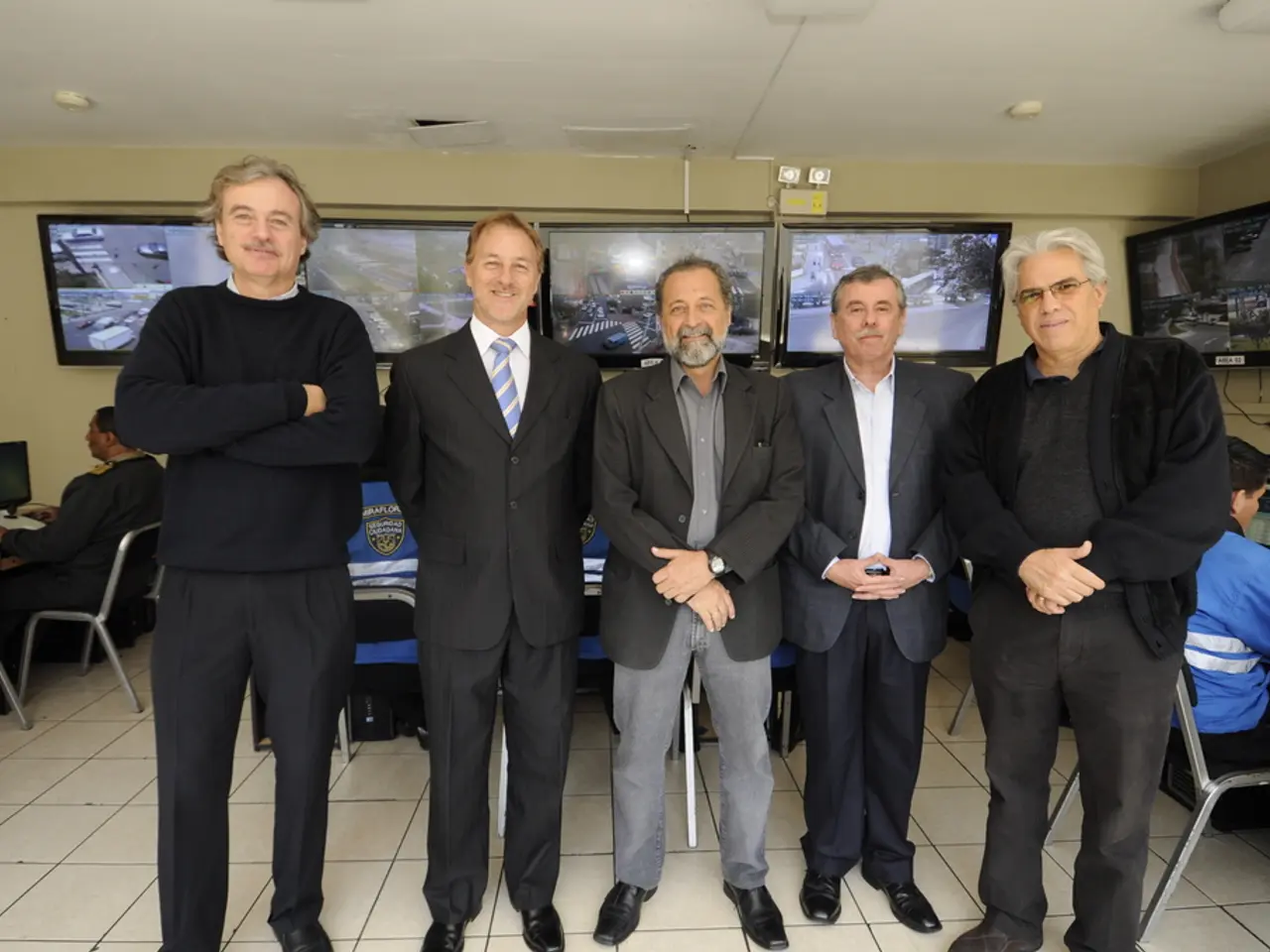Informational Displays of Wisdom
Malachowsky Hall, a seven-story building at the University of Florida, stands as a testament to the institution's commitment to interdisciplinary AI, computing, and data science education and research. The 263,440-square-foot facility, home to departments from Medicine, Pharmacy, and Engineering, is designed to foster collaboration among students, faculty, and researchers in the fields of computing, communications, and cyber technologies [1].
The building is organised around a vertical commons, physically and visually connecting various colleges and departments. It boasts adaptable faculty offices, open student workspaces, classrooms, and research labs equipped to support rapidly evolving technologies [1]. The ground floor houses specialized maker spaces focused on innovation in robotics, virtual reality, and the Internet of Things (IoT), underscoring its role in cutting-edge technology development [1].
Malachowsky Hall is LEED Platinum-certified, with innovative architectural elements such as 1,500 custom folded metal panels with trapezoidal electrochromic glass, providing enhanced natural light control and energy efficiency [1]. The facility also supports UF’s deployment and use of the fourth-generation HiPerGator supercomputer, a leading AI research infrastructure in higher education, which became accessible to users in mid-2025 [2].
In addition to the supercomputer, Malachowsky Hall is home to several AI-related research projects. For instance, one project in the IOT Lab, led by Bianca Burini, is using IOT technology to track mosquito colonies for the purpose of relocating them [1]. Another project, led by Kiley Graim, assistant professor at UF, uses the AI Lab for computational genomics, making predictions on disease progression and drug response based on an individual’s genome [2].
The AI Lab, VR/Robotics Lab, and IOT Lab in Malachowsky Hall have been equipped with Absen video displays. The AI Lab features an Absen HC0.9 PRO II video wall at a 0.9mm pixel pitch, while the VR/Robotics Lab and both labs have Absen Acclaim A2712 PRO LED video displays with a 1.2mm pixel pitch, measuring 24 feet wide by 13 feet tall [3].
The video processor running the displays in all three labs is a Datapath video processor, and Peerless-AV provided a custom mount for the curved display in the AI Lab. The AI Lab also serves as an overflow space for high-profile speakers like NVIDIA CEO, Jensen Huang [3].
Malachowsky Hall's primary mission is to offer AI education to all students, regardless of academic focus. The university collaborates with other universities, colleges, and K-12 schools to incorporate AI education into their own programs [1]. The facility houses faculty and students from various departments, including the College of Medicine, College of Pharmacy, and the Department of Computer Information & Information Science & Engineering [1].
Graim and her team have had success with their AI methods, aiming to make people's lives better [2]. The facility's commitment to interdisciplinary collaboration and cutting-edge technology is evident in its design, equipment, and the groundbreaking research projects it hosts. Malachowsky Hall is undoubtedly a flagship facility exemplifying UF's commitment to interdisciplinary AI, computing, and data science education and research.
Sources: [1] University of Florida (2021). Malachowsky Hall. Retrieved from https://www.ufl.edu/malachowskyhall/ [2] University of Florida (2022). Malachowsky Hall Facilities. Retrieved from https://www.ufl.edu/malachowskyhall/facilities/ [3] University of Florida (2022). Malachowsky Hall Technology. Retrieved from https://www.ufl.edu/malachowskyhall/technology/
The Malachowsky Hall's primary mission is to offer AI education to students across various academic disciplines, promoting collaboration with other educational institutions in K-12, colleges, and universities for a wider AI education reach [1]. This mission aligns with the university's commitment to interdisciplinary AI, computing, and data science education and research [1]. Moreover, the cutting-edge technology integrated into the facility, such as the Absen video displays and the fourth-generation HiPerGator supercomputer, supports data-and-cloud-computing oriented business, technology, education-and-self-development, and online-learning opportunities [1][2][3].




